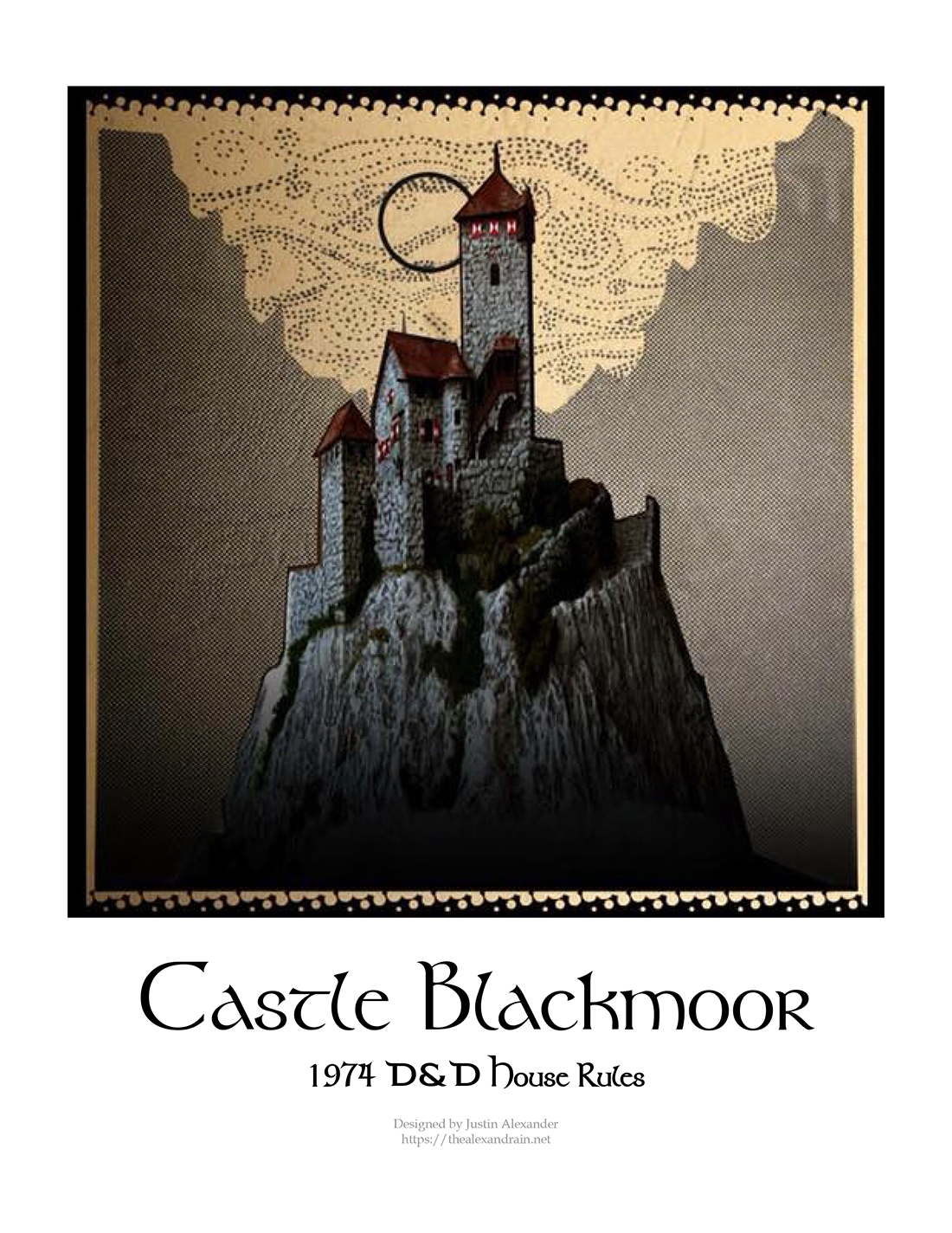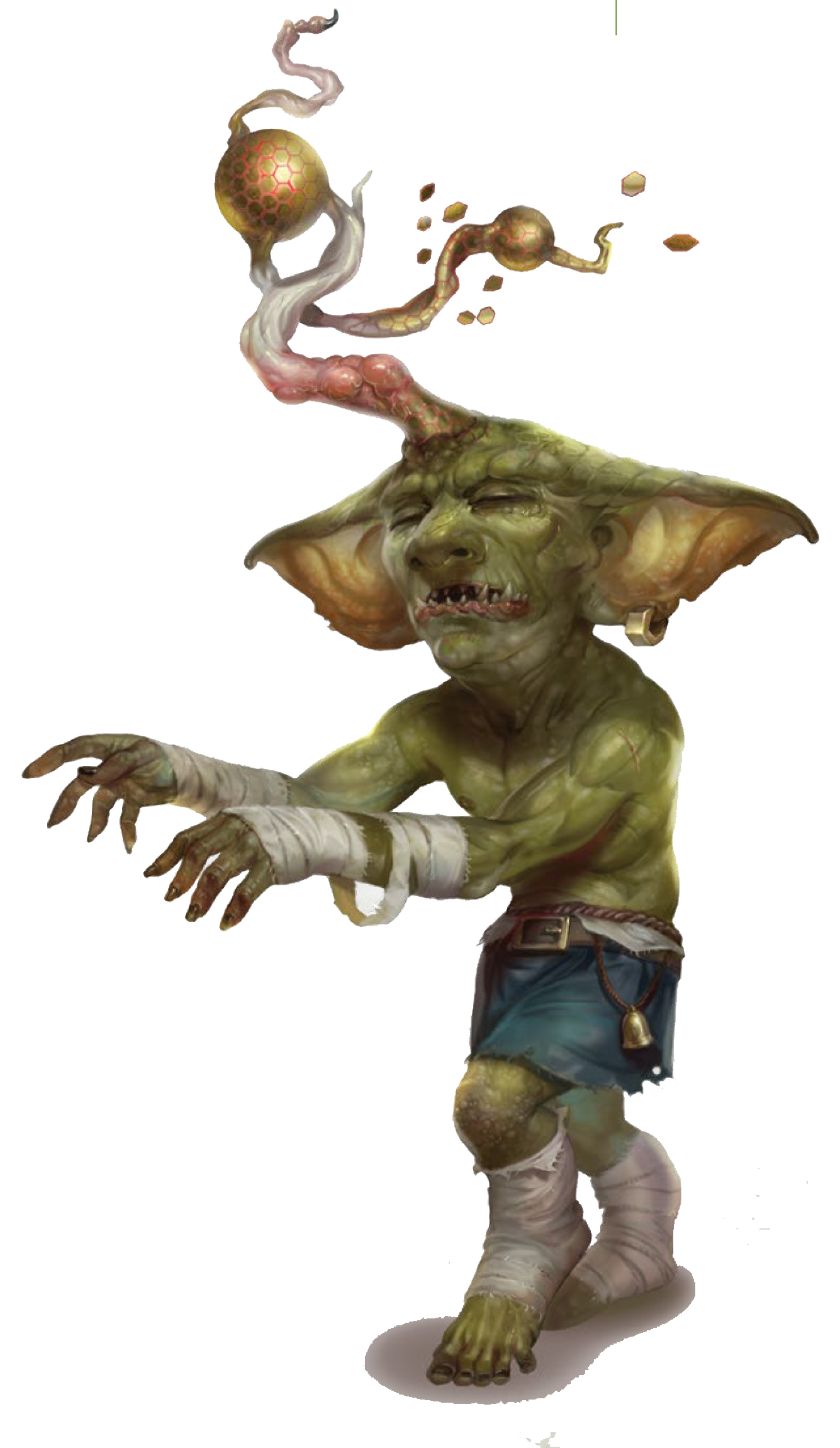
We’re continuing our series of capsule reviews of Descent Into Avernus-related material on the Dungeon Masters Guild, giving a very high overview of my thoughts/impressions of each book. Unless otherwise noted, the material has not been playtested.
You may also want to review this Guide to Grades at the Alexandrian. The short version: My general philosophy is that 90% of everything is crap, and crap gets an F. I’m primarily interested in grading the 10% of the pile that’s potentially worth your time. Anything from A+ to C- is, honestly, worth checking out if the material sounds interesting to you. If I give something a D it’s pretty shaky. F, in my opinion, should be avoided entirely.
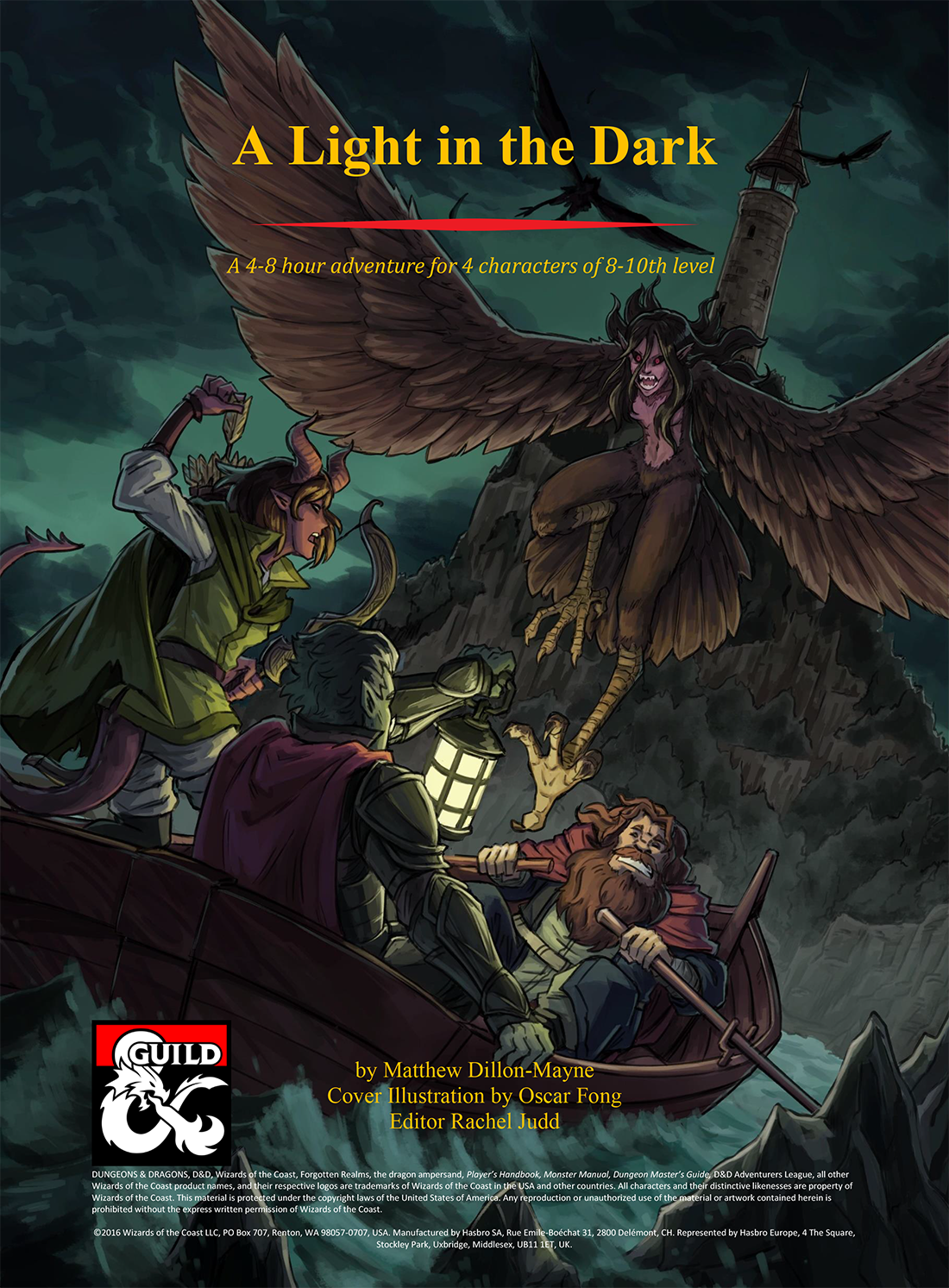 A LIGHT IN THE DARK: A Light in the Dark bills itself as tying into the continuity of Descent Into Avernus, but it’s set in Baldur’s Gate while having a suggested level at which PCs in the campaign will have long since left Baldur’s Gate behind. Its purpose, therefore, is somewhat confusing.
A LIGHT IN THE DARK: A Light in the Dark bills itself as tying into the continuity of Descent Into Avernus, but it’s set in Baldur’s Gate while having a suggested level at which PCs in the campaign will have long since left Baldur’s Gate behind. Its purpose, therefore, is somewhat confusing.
The maps are nice and the concept is fine, but the adventure itself is virtually unplayable. It’s more or less written as a Choose Your Own Adventure novel, consisting of literally just pages and pages (and pages!) of horribly executed boxed text. Often this boxed text is outlining literal A or B choices. It repeatedly ends with the refrain, “What do you want to do?” literally scripted in. And it is constantly either telling the players what their characters do or simply leaving them helplessly standing by while entire scenes play out without their input.
Perhaps the most egregious example of this comes when the PCs confront the villain. While the PCs stand unable to act (because the DM is reading), the boxed text has:
- The villain order a zombie girl to go punish her parents.
- The zombie girl leave the room.
- The girl’s parents scream and beg for mercy from the neighboring room.
- The sound of thumping that turns to screams of pain.
- “The noises they make will stay with you for a long time.”
This is one of those times where I wish I had more nice things to say about an adventure. But I don’t.
- Grade: F
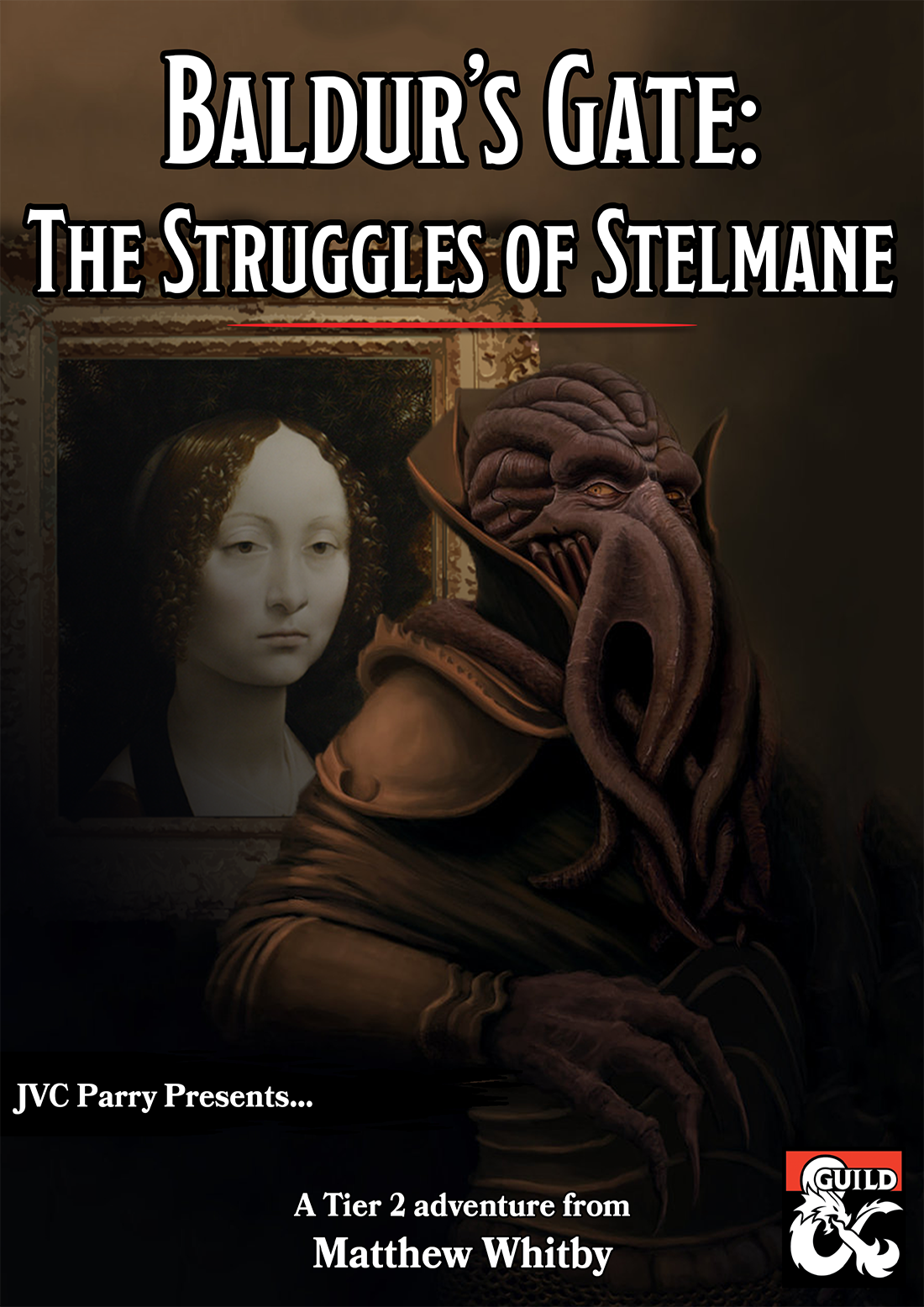 BALDUR’S GATE – THE STRUGGLES OF STELMANE: This is another adventure which presents itself as being something you can incorporate into a Descent Into Avernus campaign, but which is nevertheless set in Baldur’s Gate with a suggested level too high to be used in the campaign. (What gives, folks?)
BALDUR’S GATE – THE STRUGGLES OF STELMANE: This is another adventure which presents itself as being something you can incorporate into a Descent Into Avernus campaign, but which is nevertheless set in Baldur’s Gate with a suggested level too high to be used in the campaign. (What gives, folks?)
The Struggles of Stelmane is a fairly simple adventure: A mind flayer is attempting to take control of Duke Stelmane. The PCs are told by the Duke’s assistant to investigate some caves. They do so and find a tunnel that leads to Stelmane’s manor. (Which – pet peeve alert! – is incorrectly referred to as a villa.) The mind flayer is in the manor. The PCs kill it.
Unfortunately, the adventure spends a great deal of time spinning its wheels. (It’s about 5 pages of content in a 20 page PDF.) And when it’s not spinning its wheels, it frequently just doesn’t make sense: The mind flayer telepathically read Stelmane’s mind and for some reason this is causing Stelmane’s physical health to deteriorate. The duke’s assistant requests a meeting with the PCs, but the only thing he asks them to do is investigate a murder that doesn’t happen until the PCs show up to meet him. The adventure frequently talks about “following a series of clues,” but there are no clues to follow. And so forth.
- Grade: D-
 DANCE OF DEATHLESS FROST: Dylan Ramsey delivers a clever little expansion of Descent Into Avernus, giving the PCs an opportunity to track down the mysterious phylactery of deathless frost. With it they can either control the demon lord Kostchtchie or destroy it and turn him mortal.
DANCE OF DEATHLESS FROST: Dylan Ramsey delivers a clever little expansion of Descent Into Avernus, giving the PCs an opportunity to track down the mysterious phylactery of deathless frost. With it they can either control the demon lord Kostchtchie or destroy it and turn him mortal.
My one quibble with the adventure is that it suffers a little from what I call “idea guy syndrome.” A common variant is, “Wouldn’t this encounter be cool?” This often takes the form of the bad guys sending minions to attack the PCs… but the encounter isn’t actually statted up (e.g., “She could send fiendish assassins or a simulacrum to try to steal the phylactery from the characters.”) But you also get stuff like, “It feels like the NPC’s lair should have fiendishly clever defenses… but I couldn’t figure out how to do it, so here’s a couple of vague ideas.”
So, basically, you’re going to have to put some elbow-grease into Dance of Deathless Frost if you want to use it. Nevertheless, Ramsey delivers some cool ideas, memorable locales, and nifty ideas, so it’s probably worth the effort. (I will most likely be incorporating this scenario into the Remix.)
- Grade: C-
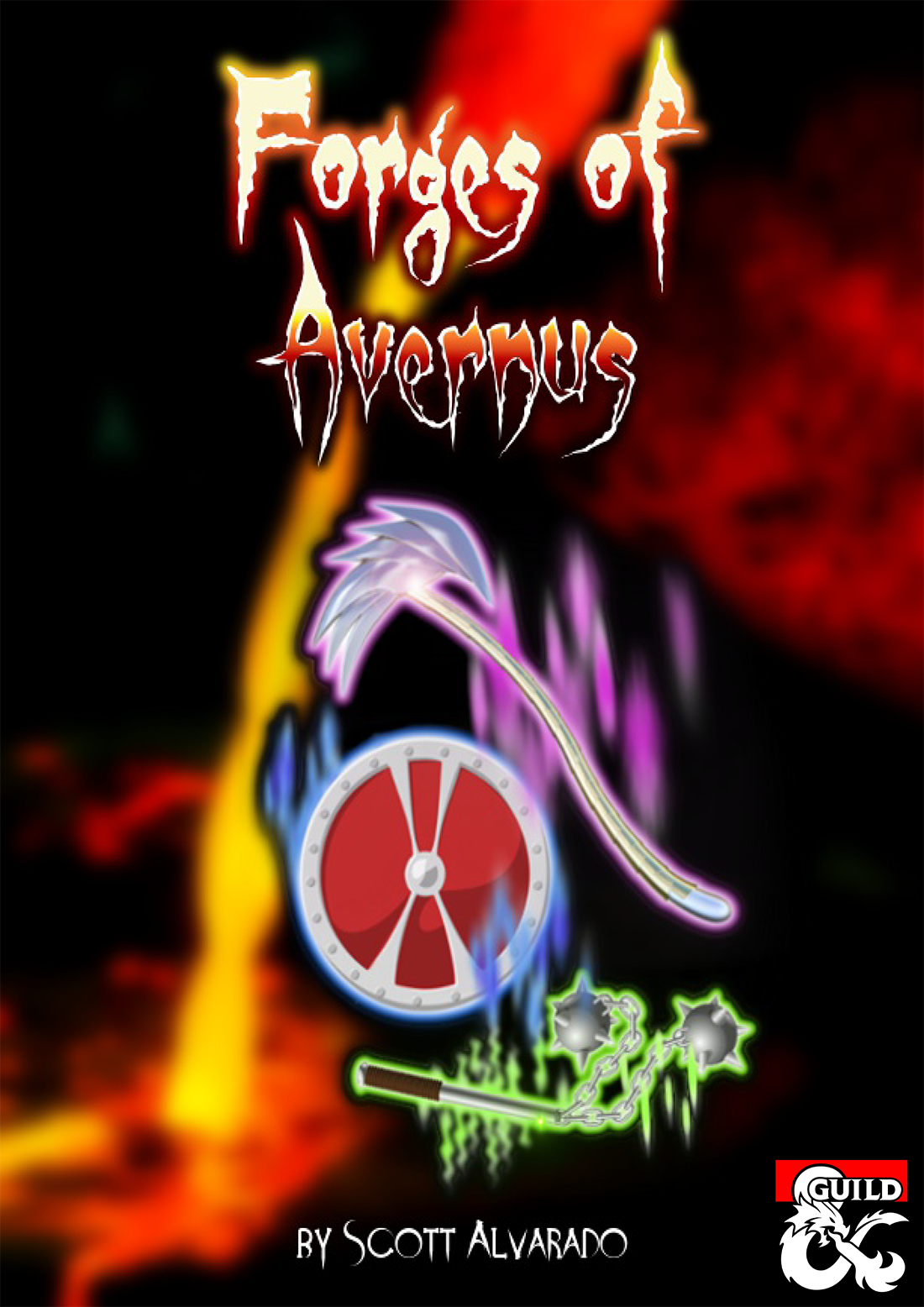 FORGES OF AVERNUS: The central conceit of Forges of Avernus is that each Warlord of Avernus maintains their own forge to outfit their warriors, and each of these forges is skilled in the creation of special, themed weapons. I like this a lot: One of the big shortcomings in Descent Into Avernus is that it details the warlords, but not their warbands. I wanted to supplement that lack, and Forges of Avernus does a lot of heavy lifting for me. Not only will the unique weapons make for distinct combat encounters with each warband, but the supplement also details the NPC forge masters (adding extra roleplaying opportunities).
FORGES OF AVERNUS: The central conceit of Forges of Avernus is that each Warlord of Avernus maintains their own forge to outfit their warriors, and each of these forges is skilled in the creation of special, themed weapons. I like this a lot: One of the big shortcomings in Descent Into Avernus is that it details the warlords, but not their warbands. I wanted to supplement that lack, and Forges of Avernus does a lot of heavy lifting for me. Not only will the unique weapons make for distinct combat encounters with each warband, but the supplement also details the NPC forge masters (adding extra roleplaying opportunities).
The only drawback here is that the mechanical mastery of 5th Edition is a little shaky. For example, there are several effects triggered “on a critical failure,” but there are no critical failures in 5th Edition. This doesn’t appear to be a crippling problem, but when you see a weak grasp of mechanical fundamentals it erodes trust in the rest of the mechanical implementation, so you’ll probably want to double-check these elements as you add them to your campaign.
- Grade: B-
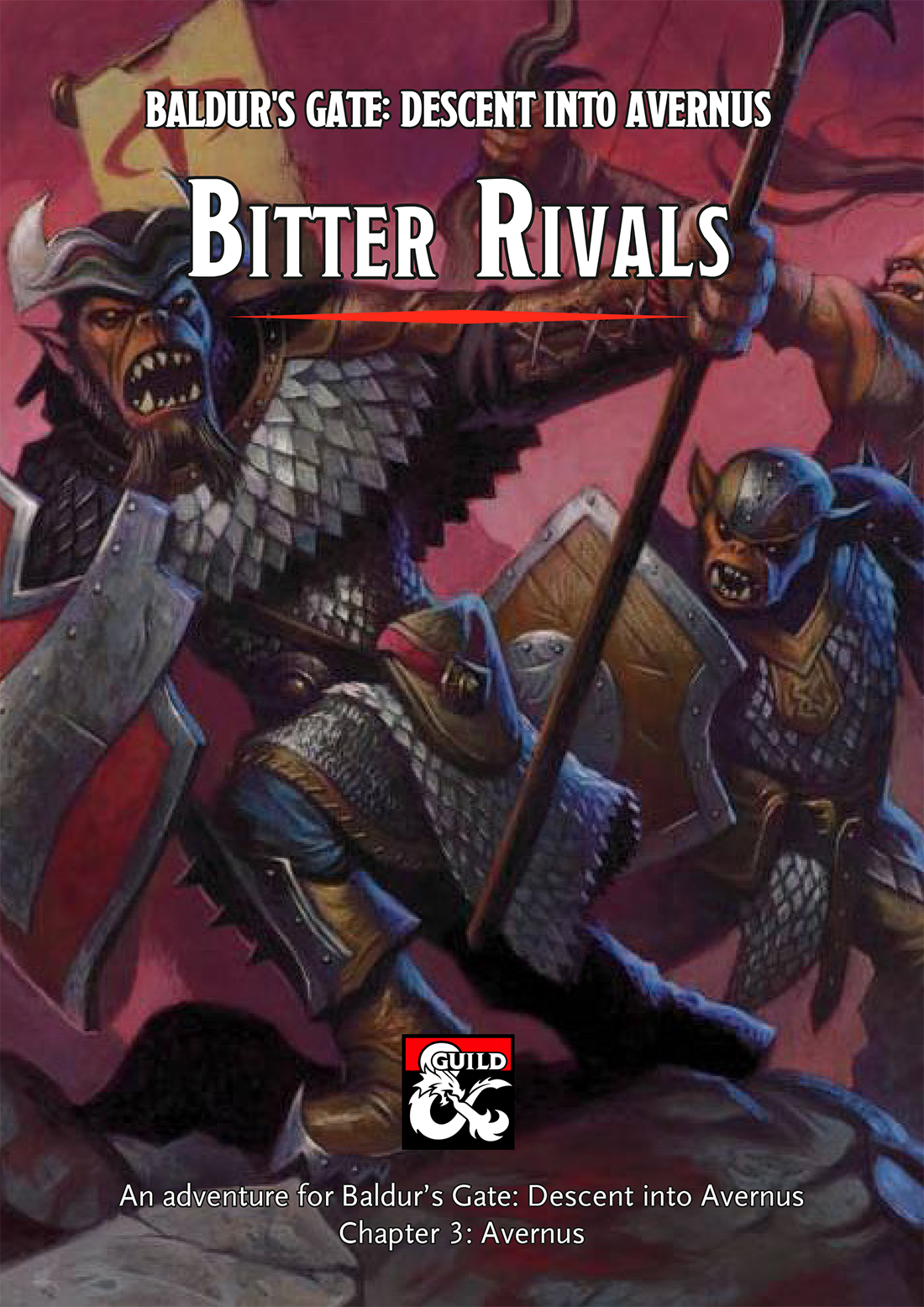 BITTER RIVALS: Bitter Rivals is a slick, professional-grade adventure designed to be seamlessly slotted into Descent Into Avernus. It adds a ton of lore to the warlord Bitter Breath and completely details their warcamp as part of a raid scenario. This is a no-brainer for any GM planning to run Descent Into Avernus, with or without the Remix.
BITTER RIVALS: Bitter Rivals is a slick, professional-grade adventure designed to be seamlessly slotted into Descent Into Avernus. It adds a ton of lore to the warlord Bitter Breath and completely details their warcamp as part of a raid scenario. This is a no-brainer for any GM planning to run Descent Into Avernus, with or without the Remix.
The organization and level of detail, in particular, are fantastic. One example is the formatting of the mission briefing given in the scenario hook. Rather than using traditional boxed text, J.A. Valeur of Eventyr Games uses in-line headings to identify the major bullet points of the briefing while providing the written dialogue associated with that bullet point in plain text behind the in-line heading. I hadn’t seen this technique previously, but it’s best-of-both-worlds stuff.
There’s also a really nifty DM’s Cheat Sheet section of the adventure, which basically presents the entire adventure a second time but with only the essential elements (like encounter rosters, the bullet point version of the mission briefing, etc.). Stripped of the surrounding explanatory text, this is a great document for efficiently running the adventure without flipping back and forth through multiple pages.
- Grade: B
INFERNAL BOUNTY: Another Descent Into Avernus supplement from Eventyr Games, this short 2-page PDF is basically just a random encounter with a pair of bounty hunter devils (using some very lightly customized stat blocks) for $0.50. In addition to being a random encounter, the fiend duo can make a decent response team that can be flexibly deployed at need. But I just don’t see a lot of value in Infernal Bounty even at the fairly cheap price point.
- Grade: D
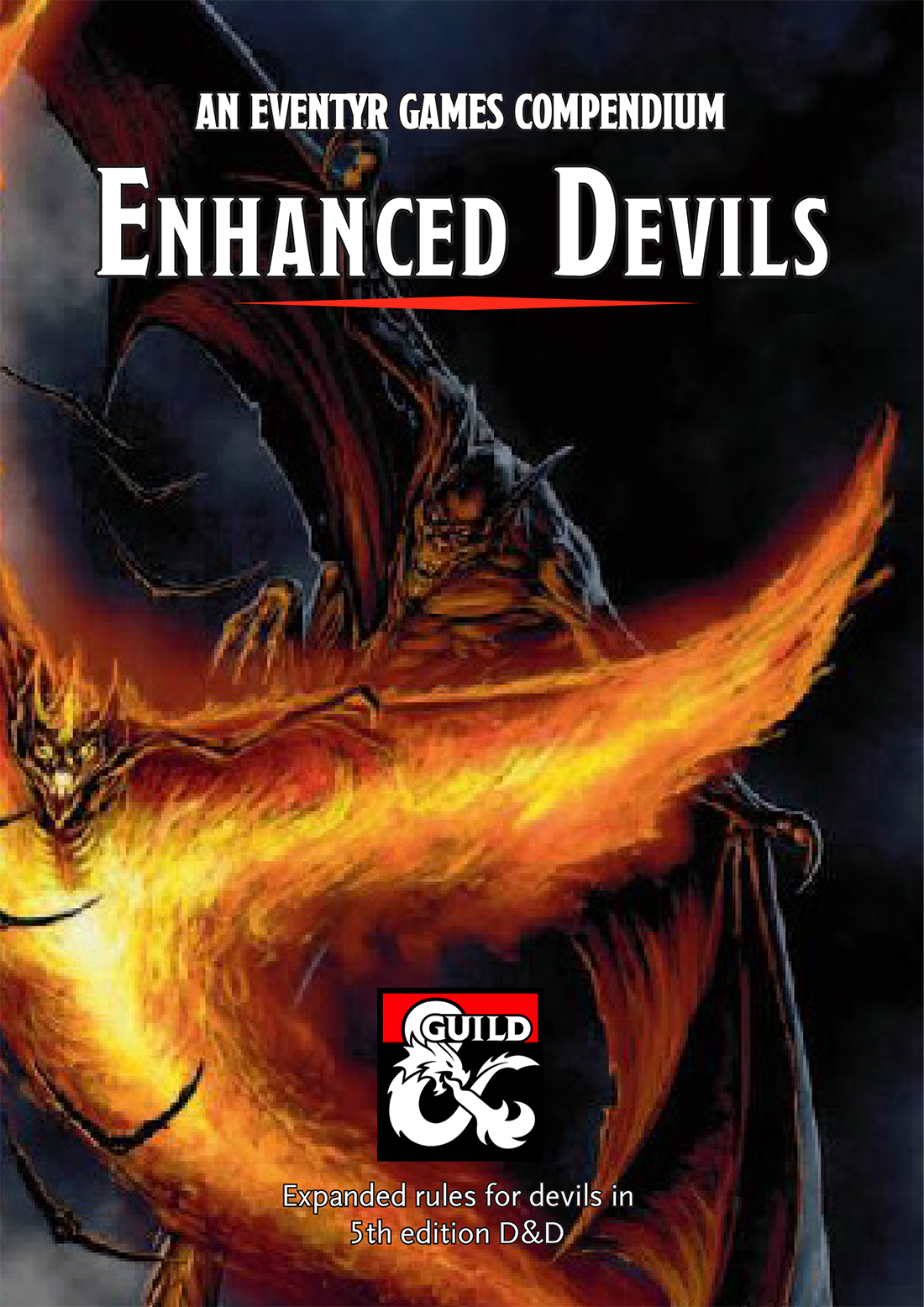 ENHANCED DEVILS: Another Eventyr supplement, Enhanced Devils looks at a dozen or so devils from the Monster Manual and soups up their stat blocks, giving them extra abilities that don’t necessarily make them more powerful, but do give them more options in combat so that multiple encounters with them stay fresh.
ENHANCED DEVILS: Another Eventyr supplement, Enhanced Devils looks at a dozen or so devils from the Monster Manual and soups up their stat blocks, giving them extra abilities that don’t necessarily make them more powerful, but do give them more options in combat so that multiple encounters with them stay fresh.
I haven’t playtested these yet, but they look balanced and useful. The important thing here, though, is the word “yet.” I’ve talked in the past about how 4th Edition’s design philosophy of reducing the breadth of abilities possessed by monsters (which has carried through, albeit to a lesser extent, in 5th Edition) on the theory that the typical monster only lasts for 3-5 rounds is fundamentally flawed (because, if nothing else, when you build an encounter with 5 of those monsters, the stat block immediately has 15-25 rounds of actions), so it’s probably not surprising to discover that I like what this supplement is doing and I like these stat blocks. I’ll be using them to help keep encounters in Avernus fresh and interesting.
- Grade: C
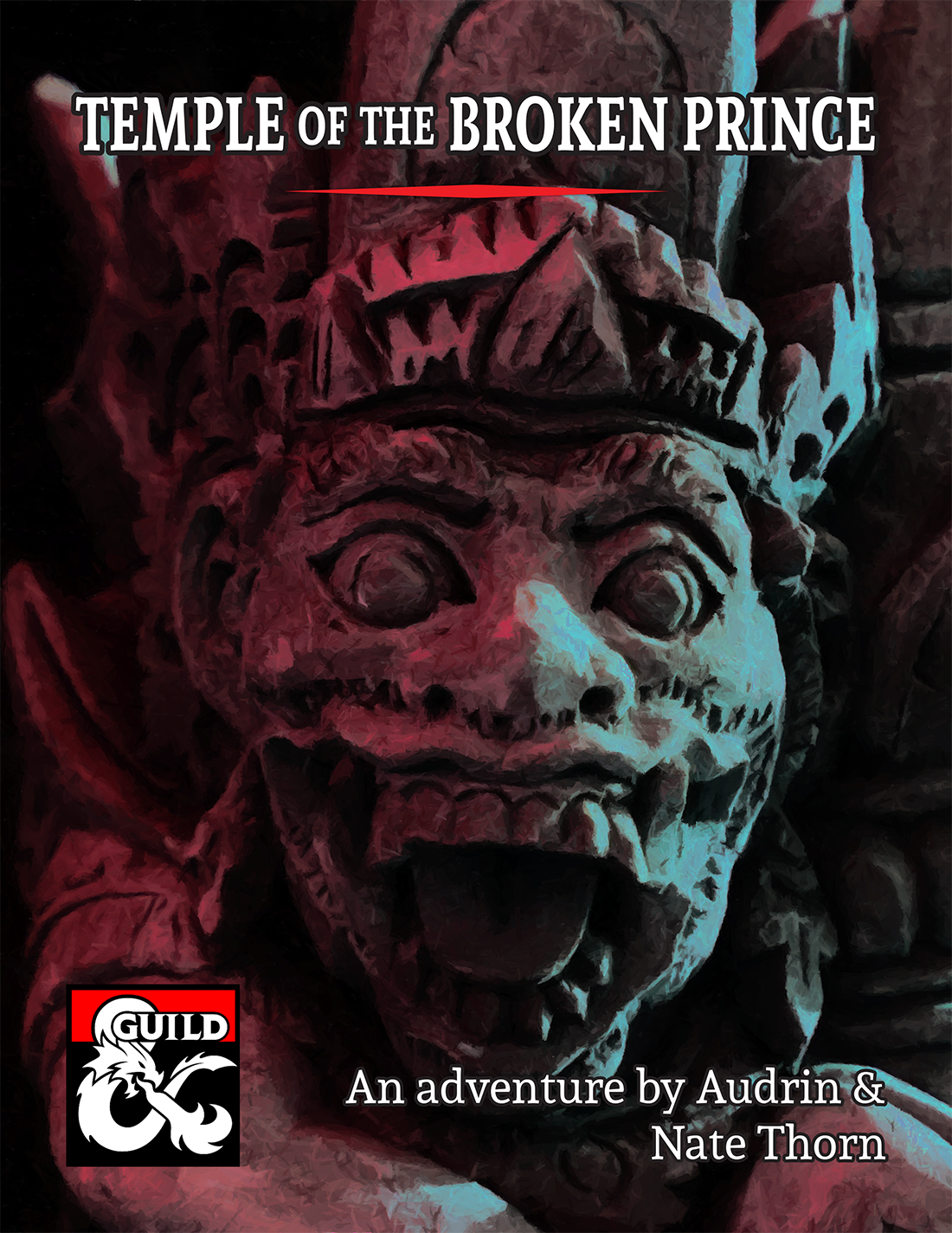 TEMPLE OF THE BROKEN PRINCE: Yet another adventure that sells itself as a plug-and-play side quest for Descent Into Avernus, but isn’t actually designed to work that way. This time, the adventure is set on Avernus, but the recommended level is too low.
TEMPLE OF THE BROKEN PRINCE: Yet another adventure that sells itself as a plug-and-play side quest for Descent Into Avernus, but isn’t actually designed to work that way. This time, the adventure is set on Avernus, but the recommended level is too low.
In actual practice, the location is not really designed for Avernus. But it IS a fairly nice location-crawl that could easily be slotted into any traditional D&D setting. (If you still wanted to use Temple of the Broken Prince as part of the Remix, it might work well as the mission that sends the PCs out of Elturel just in time for the whole city to get sucked into Hell.) A demonic temple turned into a demonic sepulcher, the rooms are weird, sinister, and drenched with dread. There’s also a couple new monsters that look like creepy fun.
- Grade: C+
More DMs Guild Capsule Reviews – Go to the Avernus Remix







